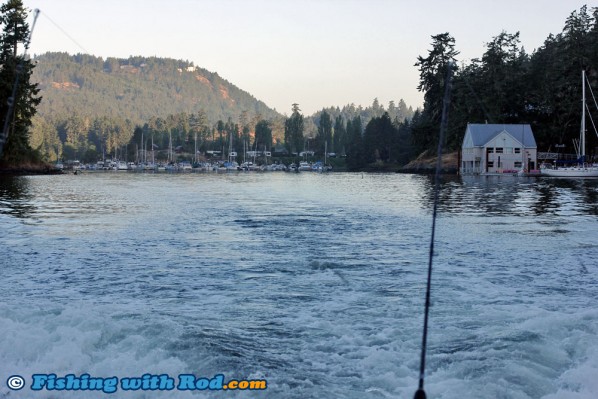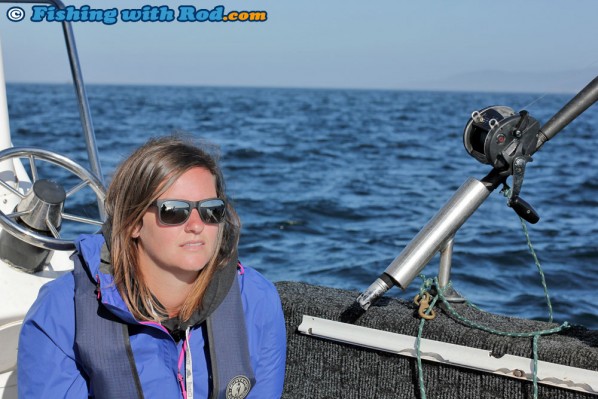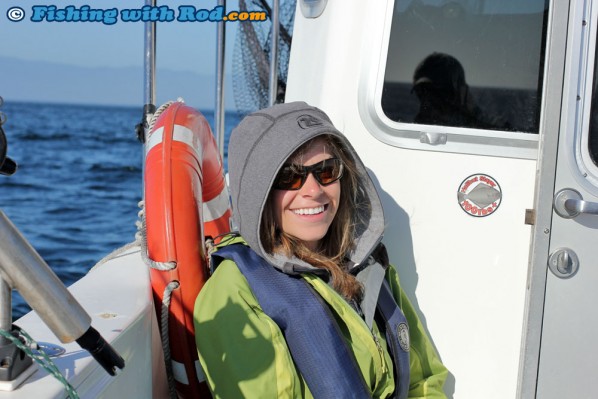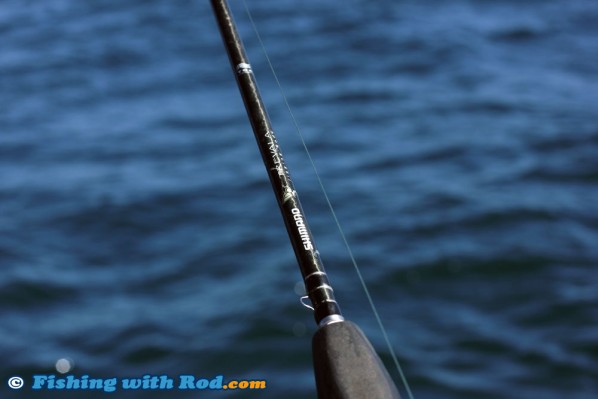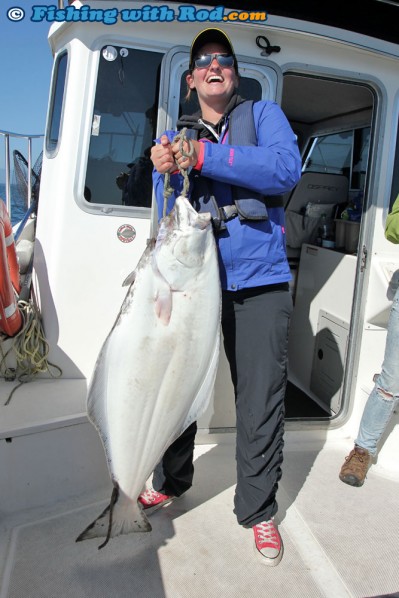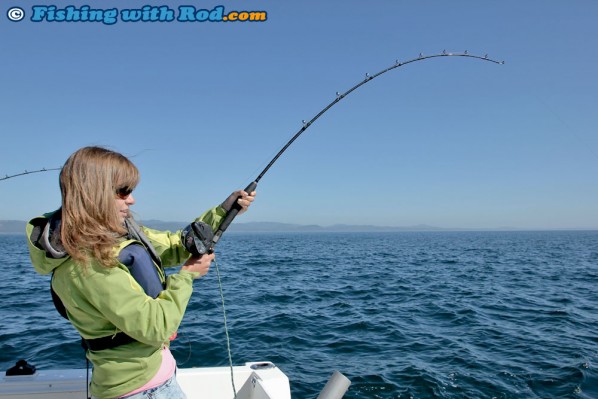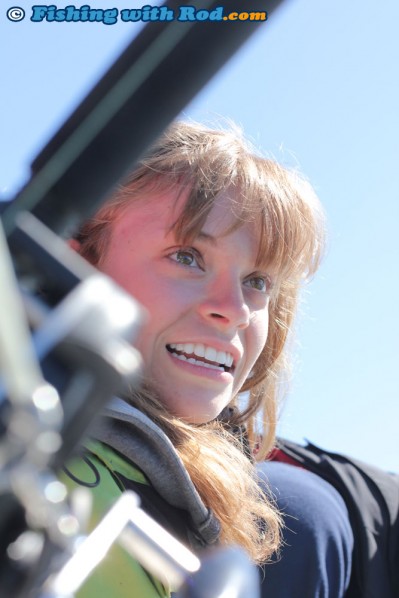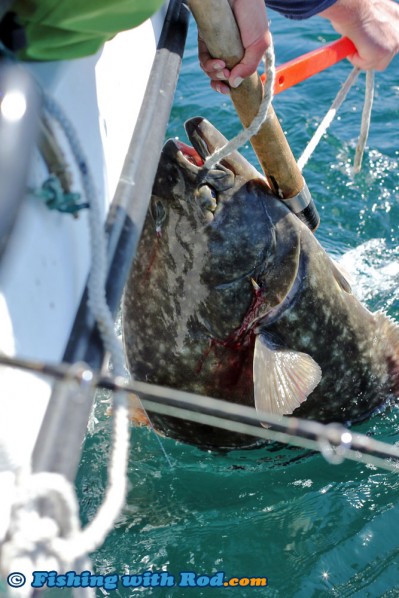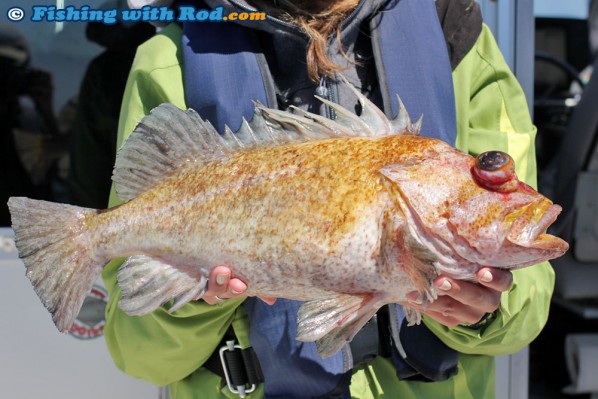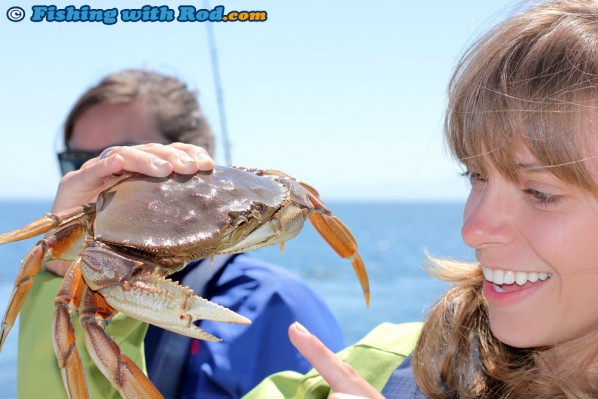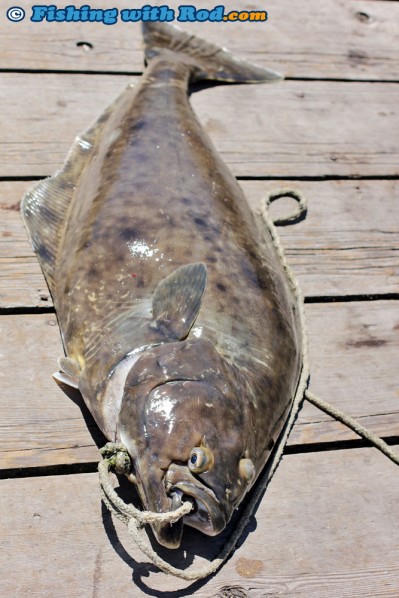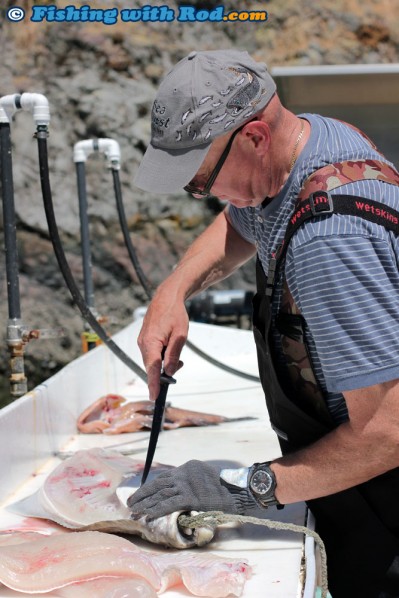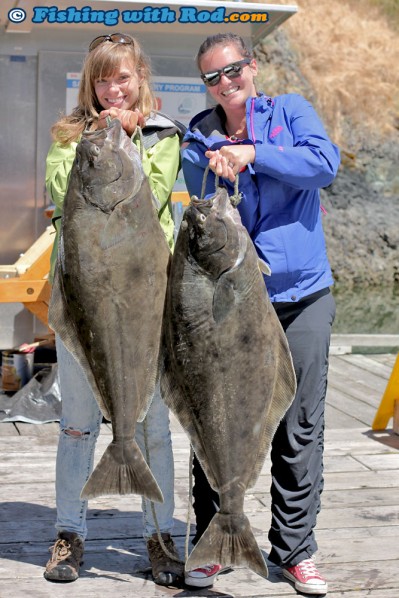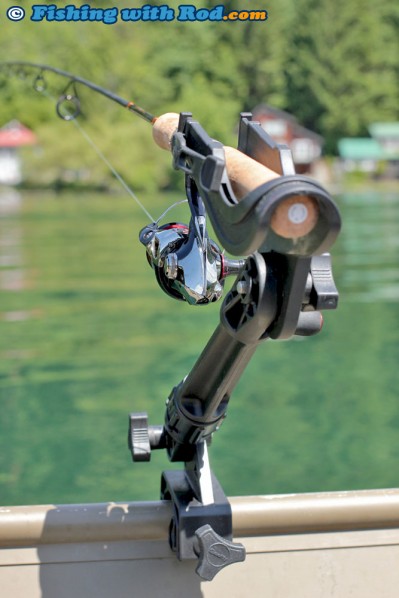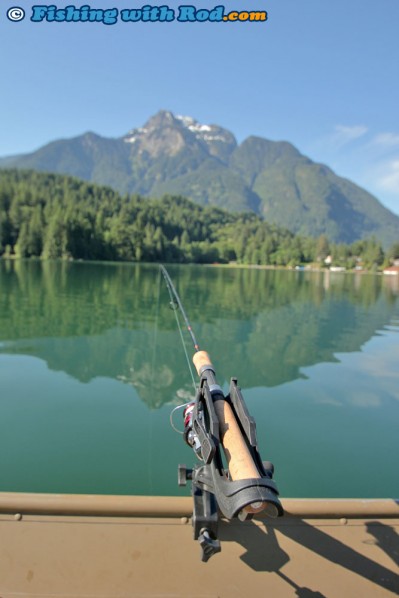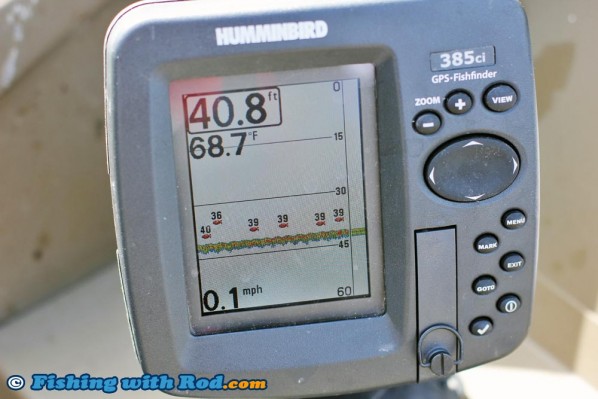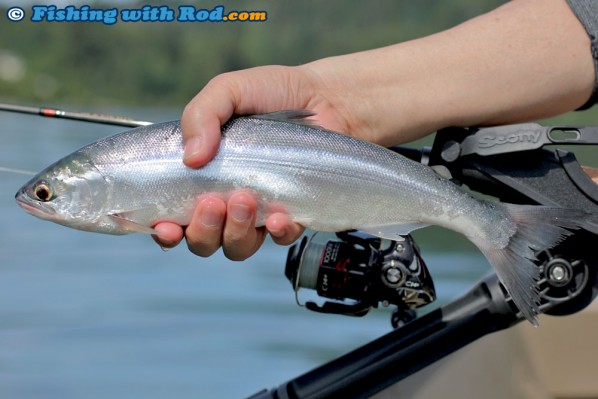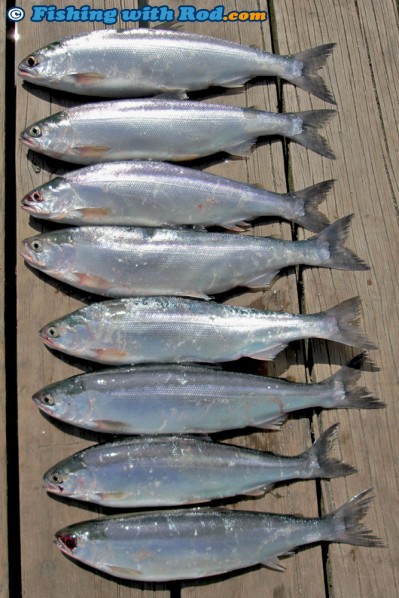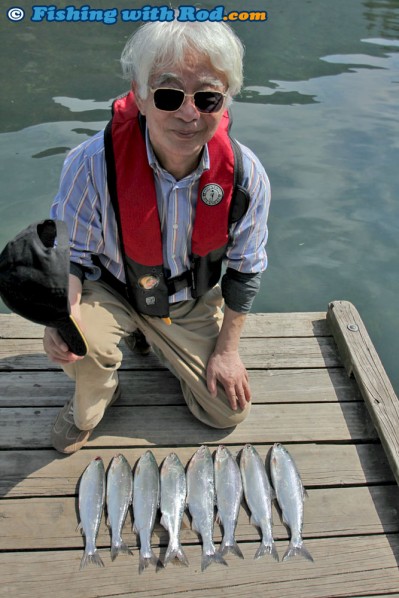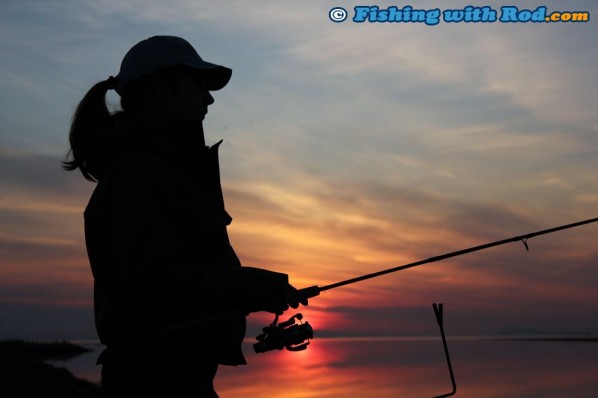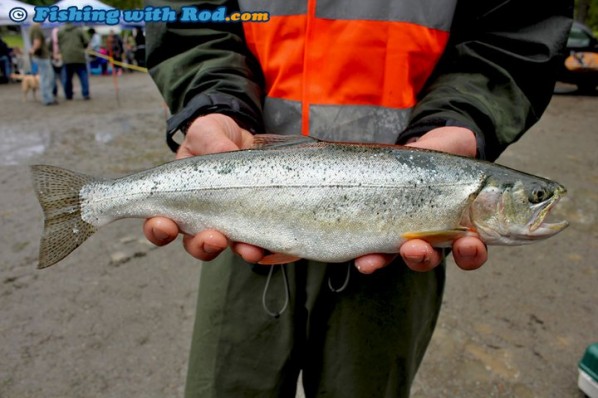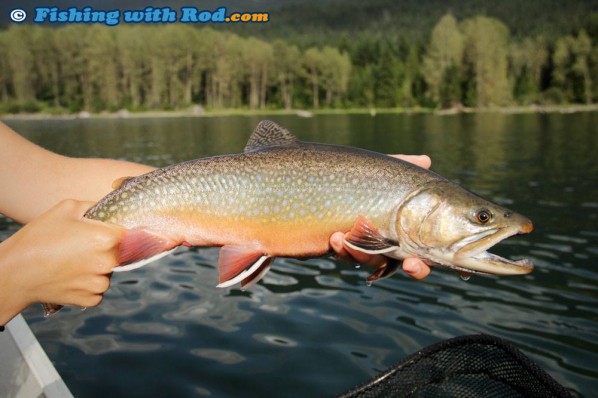British Columbia Fishing Blog
Fishing Trip Stories, Video Blog, Website Updates...
Author Archive
Halibut Fishing from Pedder Bay
Published on Wednesday, June 10th, 2015
Several years ago I was introduced to halibut fishing on Vancouver Island, and this has become one activity which I look forward to every summer. Beside having a chance to haul up a rather big fish from the deep sea, a big appeal of this fishery is tasting a piece of delicious halibut steak afterward. At $20+/lb, what’s better than catching your own and eating fish that is much fresher than the ones bought from the stores?
This spring, we decided to take a trip out with Sea Ghost Fishing Charters, which is based at Pedder Bay Marina just outside of Victoria on Vancouver Island. Originally, we were going to do our trip in April but the last minute cancellation due to gale-force wind left us pretty disappointed. We rescheduled the trip and headed over to this week, and the weather couldn’t have worked out better. Stable, sunny weather meant a relatively calm sea. We just needed the fish to cooperate!
Tagging along with me were Kitty and Jessica, who both work at the Freshwater Fisheries Society of BC and are avid freshwater anglers. Kitty has done several saltwater trips since last year but Jessica has never been fishing in the ocean before.
Tucked in between Victoria and Sooke, Pedder Bay is a quiet inlet where summer vacationers can bring their RV and boat for a long stay. The marina has direct access to the Strait of Juan de Fuca, where fishing for both halibut and salmon can be productive throughout most of the year. At 6:00am, we met up with our guide Gord Gavin, who is a seasoned angler in the area and owner/operator of Sea Ghost Fishing Charters. The boat ride from the bay to the fishing spot only took around 20 minutes. A thin layer of fog could be seen in the far horizon, a light breeze could be felt from the West but the clear sunny sky told us that it was going to be a fabulous day.
Once the anchor was set, Gord tied the rods up with Gibbs Delta Tackle’s halibut rigs, which include a spreader bar separating the large weight and the leader. The hooks of choice were circle hooks, which are designed for these fish to hook themselves once they ingest the bait. The hooks were decorated with Hali Hawg grubs, which were then accompanied by a variety of bait including octopus, mackerel and salmon pieces. Three rods were set up and each had one type of bait rigged up in case one was preferred over the other.
Gord explained that the best time for halibut fishing is in fact when the tide is running. Our goal was to fish until the tide peaked and hope the bite would come on. It is a waiting game, the scent has to travel, drawing those hungry halibut to the bait. Once the bait settled on the bottom, we anticipated for some bites right away but that never happened. The first two hours went by without any action, but Gord was very confident. “It will happen.”, he said. Trusting his decades of experience, we sat patiently and stared at the rod tips.
The tidal current eventually picked up as we approached its peak, so our weights were no longer settling on the bottom as much. Gord worked hard to keep the bait close to the bottom where the fish are usually feeding, by letting line out once every few minutes. His persistence was finally paid off, when one of the rods showed some signs of life just before the tide peaked.
Gord instructed us to be patient as the fish would hook itself on the circle hook. It initially gave the rod a couple of quick taps but left the bait alone for a few minutes. It then returned to chomp on the bait a few more times. This repeated for almost ten minutes until it finally committed. The rod arched in the rod holder and gave it the signature halibut head shake. Gord took the rod out of the holder, handed to Jess who was both excited and nervous. With 600ft of line out, it was going to be a long battle!
Unlike salmon, halibut do not usually run as they are brought up from the deep. The fish gave Jess a few head shakes as it came up. Gord said once these fish reach around the 60ft depth mark, they usually start fighting more due to exposure to more light. Sure enough, the fish began to pull harder as it got closer to the boat, putting Jess to work even harder. With 550ft of line reeled in, she was already quite exhausted. As the fish reached the surface, the sore arms were long forgotten, both Jess and Kitty were screaming with joy. Who wouldn’t be when you were about to land the biggest fish of your lifetime!
The most critical part of the fight is when the fish reaches the surface, because the brute force of these giant flatfish is hard to control. Gord first gaffed the fish while it swam beside the boat, dispatched it and finally secure it with a rope. The fish weighed in at 36lb, which was the perfect size for eating.
The celebration didn’t last long as the second rod began to bend soon afterward. Unlike the first fish, this one did not hesitate and began peeling line out while the rod was still in the holder. Gord handed the rod to Kitty, who last year caught her first halibut already. Instead of fighting the fish while the rod sat in the holder like last year, she decided to try the lift and retrieve method. Kitty was slightly luckier, the tide was not as strong anymore so there was less line to reel in.
It was still exhausting apparently, because Kitty’s legs were shaking once the fish reached the surface. It was a slightly smaller fish, weighing in at 33lb. The harvested pair already made this an excellent trip and we had only been fishing for four hours.
With two fish retained, Gord sent the rods down to the deep again hoping to get another one. Unfortunately the rest of the halibut lost their appetite. We managed to bring in a nice size rockfish before ending the trip at Noon.
Once we returned to the marina, a crowd of tourists was excited to see our fine catches. Fresh halibut within 20 minute boat ride from shore, we were definitely spoiled!
Many thanks to our guide Gord for this fantastic halibut fishing trip. While being able to bring home some fish from a guided fishing trip is nice, the most valuable experience is in fact the local knowledge from a guide who is willing to share and Gord is definitely one of them. I really appreciate that I now have a better understanding on the halibut fishery after the trip.
Pedder Bay Marina is approximately 40 minutes drive from Downtown Victoria. Because most of the trips start quite early in the morning, it’s best to catch the ferry to Victoria the night before if you are coming from Vancouver. If you’d like to book a trip with Gord at Sea Ghost Charters, please visit his website where he has listed all the available best dates for halibut fishing based on the tide. The halibut fishery in British Columbia usually opens on February 1st but Gord does not start his charters until March 1st, and it lasts until late November unless an earlier closure is announced in-season.
A Hot Kokanee Morning
Published on Thursday, May 21st, 2015
I get to fish with my dad a couple of times per year and I usually try to pick a different fishery each time so he gets to experience them all. At the age of 78, some of these fisheries have to be experienced now before he can’t physically do it anymore.
Today we spent the morning at Kawkawa Lake, where I already gave it a go on Monday with some success. While I was able to find some pretty thick schools on the sounder on Monday, only one fish was brought to the boat. It seemed like the bites were happening in the morning and tapering off after Noon, so today we decided to go with an early start, by arriving at the boat launch at 7:30am (well, that’s early in Rodney’s book).
I’ve been playing around with different ways to position my rod for better hook-set when mooching/bottom fishing for kokanee on the bottom. The bait is sitting on the bottom at 40 feet and straight down from the rod, so I want my rod to be sitting parallel to the water surface and slightly elevated so it’s close to my eye level. This way I can see those tiny bites better. Right now I am using a Scotty coaming/gunnel clamp mount on the side of my boat by my seat, which has a rod holder extender attached to it so the spinning rod holder is sitting about a foot higher than the edge of the boat.
There wasn’t a whole lot of activity between 8am and 9am. One other boat was out trolling and I managed to bring in one kokanee after a few fish went by on the sounder.
The show really started at 9am when fish started to show up on the sounder constantly. Whenever it happened, the rods would start getting nibbles. We used deli shrimp that has been cured with Pautzke Firecure (red). Only half or less of a shrimp is threaded onto the size 4 hook so the fish don’t have to chew on it for too long before being hooked.
We managed to get our limit of 8 fish by 10am, then the bite actually tapered off. Not sure if it was the sudden increase of boat activities on the lake, but they just kind of disappeared from the sounder. We packed it in at 10:30am to get away from the heat.
Here is a happy customer for once!
2015/2016 Lower Mainland Freshwater Fishing Regulation Changes
Published on Wednesday, April 1st, 2015
As we enter another new fishing licence year, some freshwater regulation changes have been implemented in the Lower Mainland and Fraser Valley (Region Two). Regulations are reviewed every year and some changes are often made to accommodate angling quality and conservation. Here are some major changes which you should be aware of before going fishing:
Night Time Fishing Closures
Until now, daylight only fishing regulations have only been limited to salmon in some streams. Starting on April 1st 2015, daylight only fishing will also apply to all species for the non-tidal portion of the Fraser River, Lower Pitt River and Harrison River. This means you can no longer fish at night from one hour after sunset to one hour before sunrise.
This change was first proposed late last year as a way to reduce poaching of white sturgeon, which often takes place at night. By having complete night time fishing closures in these three main systems where sturgeon fishing usually takes place, conservation officers hope to catch poachers more easily and see a significant reduction on sturgeon poaching.
The changes have been controversial because representatives of most sport fishing organizations have opposed it, believing this is yet another loss of sport fishing opportunities which the community will never get back. By having a blanket fishing closure, families can no longer enjoy fishing for other species such as Northern pikeminnow by the camp fire at night in the summer. Most of the poaching also take place in the tidal portion of the Fraser River (downstream from Mission, regulated by Fisheries and Oceans Canada), where it remains open for night time sturgeon fishing. It is hoped that Fisheries and Oceans Canada will soon follow these changes which the province has made, otherwise it kind of defeats the purpose of this closure.
Releasing Big Wild Trout and Char in Selected Lakes
Wild trout and char over 50cm long now have to be released at Chehalis, Chilliwack, Cultus, Harrison, Lillooet Lakes. There has been very little understanding on the trout and char populations of these lakes, which are connected to the Lower Fraser River. Some have long believed that anadromous coastal cutthroat trout and bull trout travel between these lakes and the Fraser River.
A good example is this hatchery-marked cutthroat trout caught at Cultus Lake during the pikeminnow fishing derby several years ago (above photo). Hatchery-marked coastal cutthroat trout are only released in several Northern tributaries of the Lower Fraser River, therefore this fish must have travelled from one of these tributaries, through the Fraser River, up the Chilliwack/Vedder River before it reached the lake.
By requiring anglers to release large wild trout and char at these lakes, we can further protect the vulnerable anadromous trout and char stocks of the Lower Fraser River.
Ross Lake Brook Trout Retention
Until now, anglers are required to release all native char (bull trout) at Ross Lake where the Skagit River drains into. In recent years, brook trout, which have been stocked in a couple of lakes connected to Ross Lake in United States, have become more abundant. They can now be found in both Ross Lake and Skagit River when targeting rainbow trout and bull trout.
Biologists fear that these introduced fish will have a significant negative impact on the native fish populations, therefore retention of brook trout is now allowed at Ross Lake, up to five fish can be kept by one angler per day. The challenge now is to make sure anglers will identify the chars which they catch correctly. Bull trout and brook trout can look somewhat similar to those who have never caught them before. If bull trout are mistakenly retained, then this regulation change can potentially backfire.
Other Region Two regulation changes can be found in this PDF file (highlighted in blue in the water-specific table).
Late Season Fresh Chum Salmon
Published on Monday, December 1st, 2014
The fall salmon fishing season for the Lower Fraser River tributaries usually begins in early September and peaks around mid October. By late October, it begins to taper off as less and less fish move into the systems. As fishing tapers off, angling pressure also decreases. November is in fact a very pleasant time to be fishing on a large popular river system like the Chilliwack/Vedder River. The lower river often sees small schools of chum salmon arriving with the tide. Unlike what most believe, these chum salmon can be rather chrome. Check out the above video which I shot in late November.

